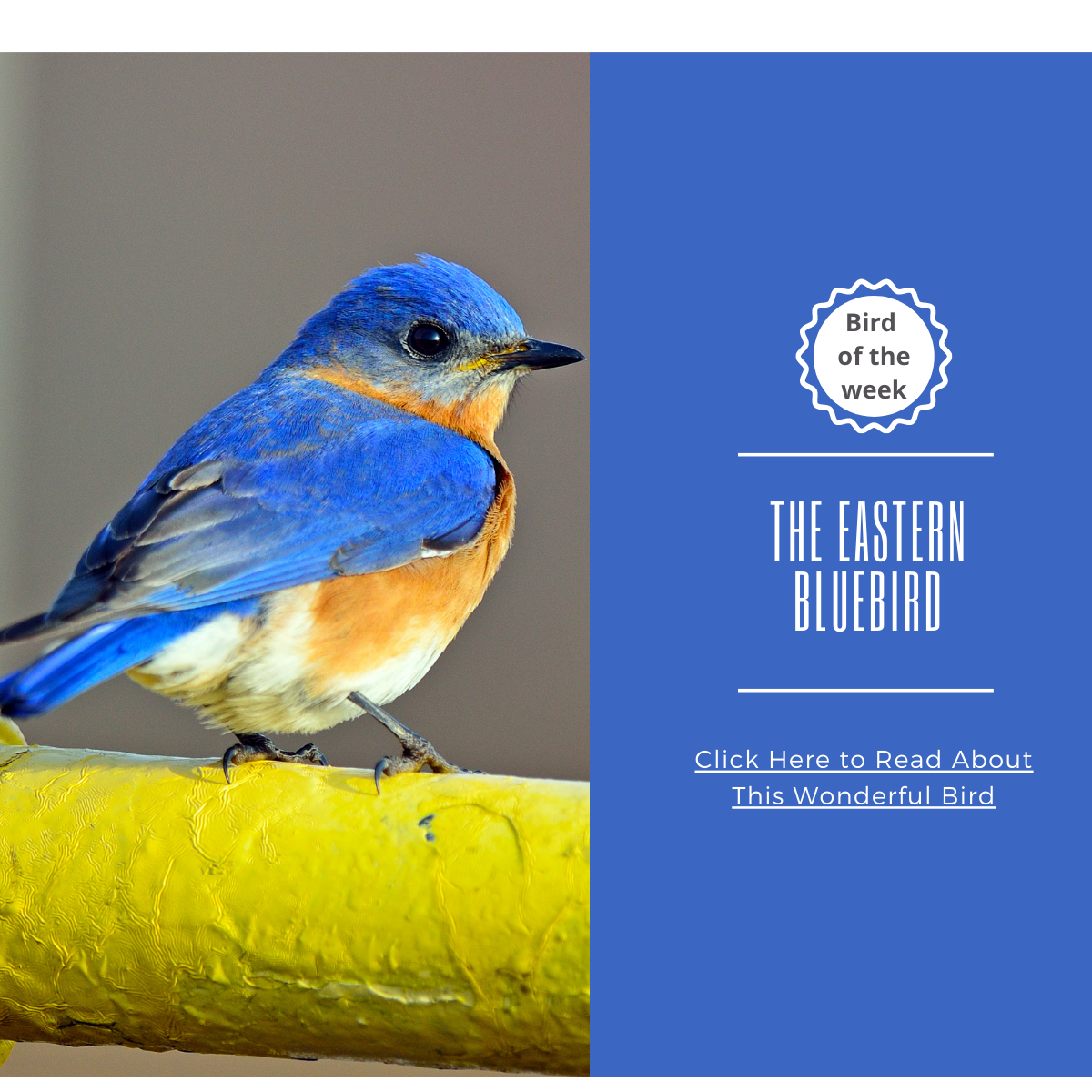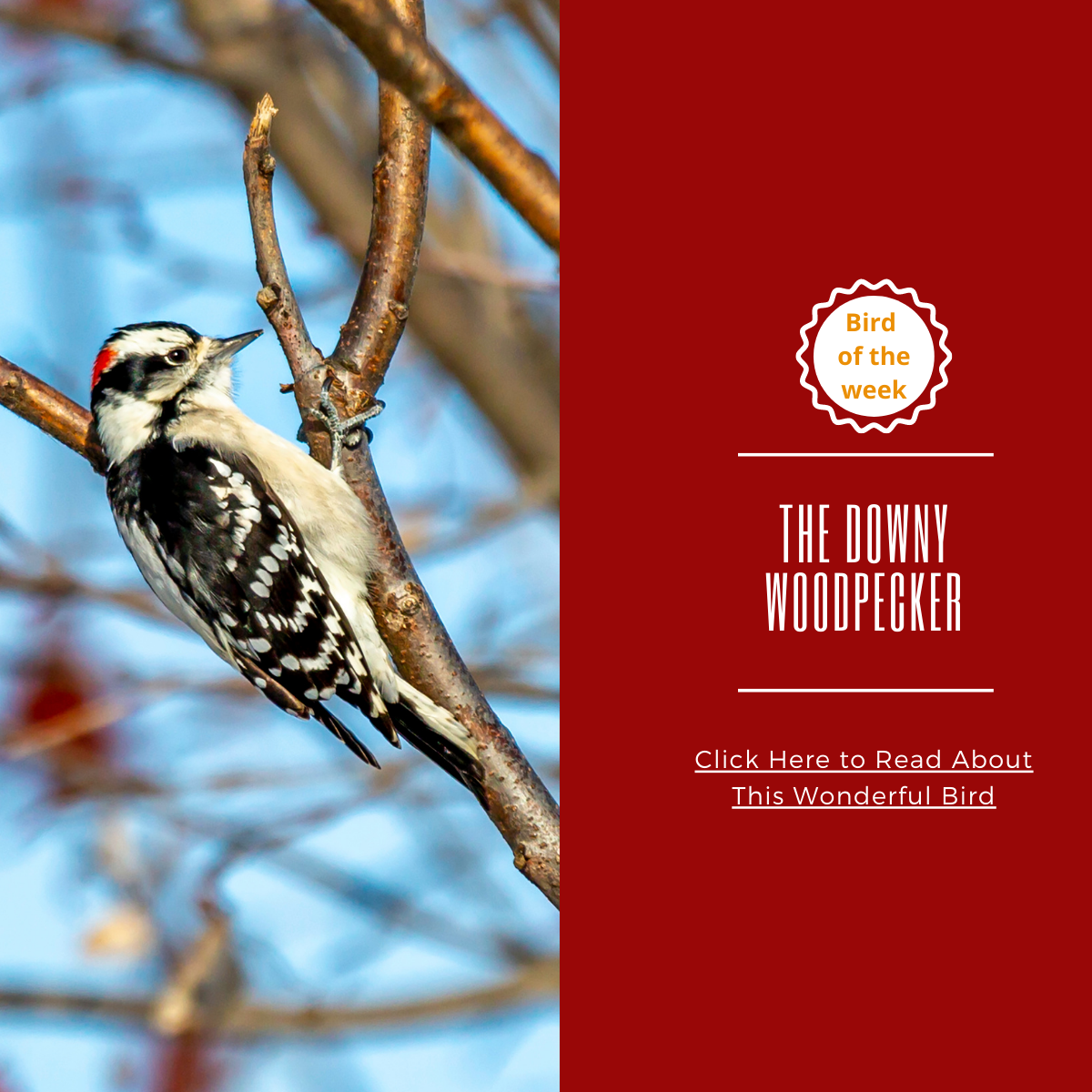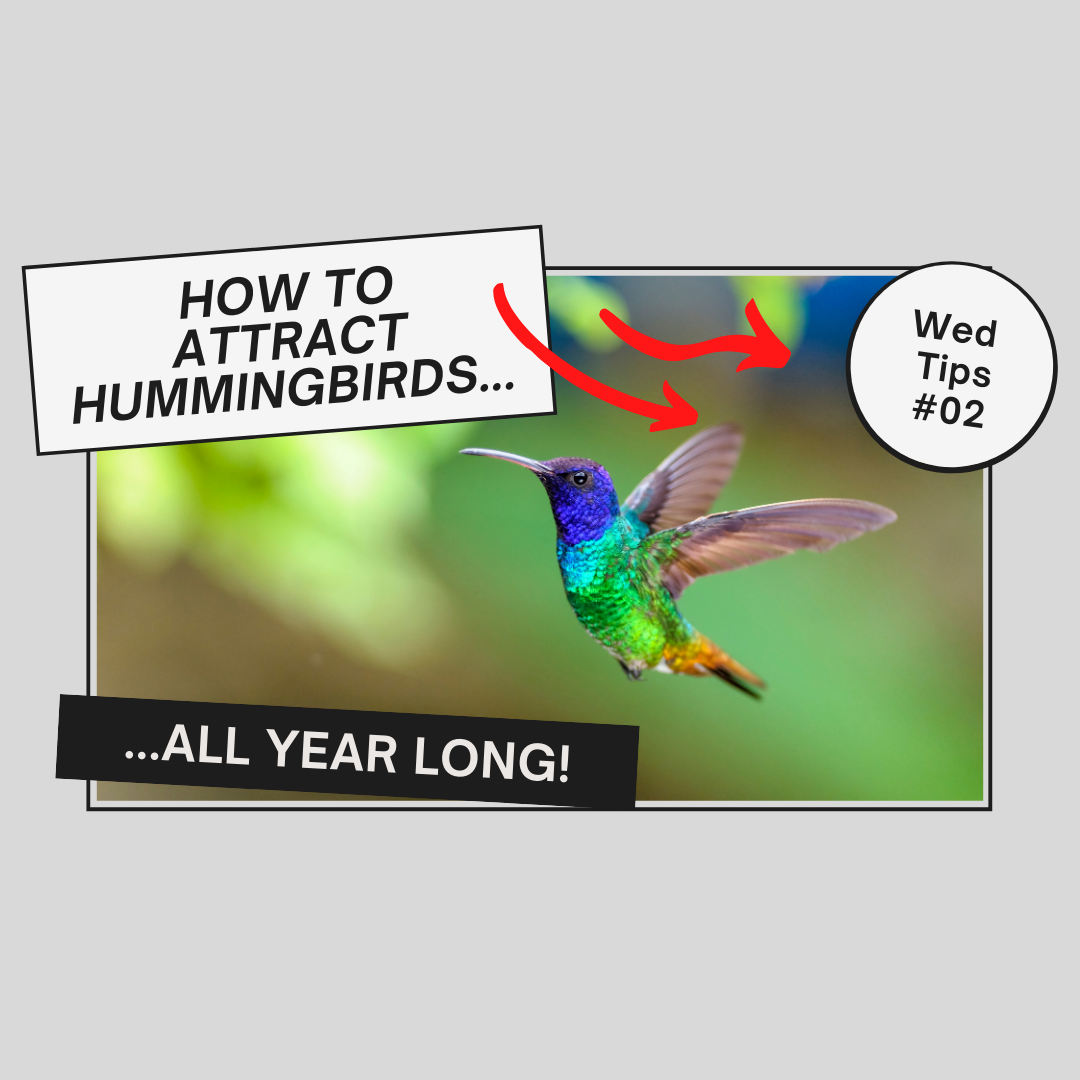COMMON NAME: Eastern Bluebird
SCIENTIFIC NAME: Sialia sialis*
OFFICIAL STATE BIRD: Missouri, New York

Here’s a birdfeeders’ favourite. In the 1960’s and 70’s, the population of these blue flyers went down 90% (!) due to harsh nesting competition between them and their rivals, the starlings and house sparrows.
When it was clear that this rapid decline was not going to get any better, a new man-made mission was born, similar to “Save the Whales” called the “Bluebird Trails”. Bird lovers everywhere started setting up man-made nesting boxes for bluebirds all over the country. And lo and behold, their population sky-rocketed again.
A big hearted man built over 1000 man made nests!
These sweet bluebirds make many a bird lover happy. And here’s why.
Looks and meaning
Adult male eastern bluebirds are thrush-sized songbirds, about 6-8 inches tall and weighing around 1 ounce.
They are known for their unmistakable striking blue wings and back as well as the bright orange that colors their throats, breasts and just around their bright white bellies. Females are the same colors but, as always, paler: grayish-blue, with a pale orange breast and neck, as well as a white chubby belly. Juveniles are speckled-gray all over but still sport that gorgeous royal blue on their wings and tail.
Eastern bluebirds are very social and fly in small flocks - though sometimes they can reach to about a hundred. They are territorial among themselves mostly during the mating season and when they have marked their winter feeding area. They don’t hold their ground so well when it comes to other kinds of birds, which is why they lost out to sparrows and starlings…
They are migratory only if they don’t find a feeding area in the winter. If they do, and bird feeders will do the job, they’ll stick around. If not, the whole flock will fly off and only fly back come spring.
* The eastern bluebirds were one of the first to be assigned their scientific name in the 18th century by Carl Linnaeus, the inventor of binomial species/genus naming. Sialia in Latin simply means “a kind of bird.” Yes, not much effort there! In the early 19th century it was “upgraded” to Sialia Sialis. Got to hand it to them for their highly original, cutting edge naming...
The flight speed of an eastern bluebird can reach up to 17 MPH. Their average life span can range from 6-10 years, although most never make it past their first year due to predators - from bears to cats, from squirrels, chipmunks and even to fire ants. The oldest eastern bluebird recorded was 10 years and five months.
When our ancestors came to the United States, they saw the bluebirds as “blue robins” because of the resemblance to the European Robin. They continued to inspire many artists such as the poet Robert Frost, The WIzard of Oz, and I’m willing to bet that they were bluebirds that Snow White sang to!
In case you missed last week's bird-of-the-week: The Downy woodpecker.
What do bluebirds like to eat
Farmers loooove eastern bluebirds because about three quarters of their diet consists of insects and other invertebrates. They are one of the best modes of pesticide - and not so hard to look at, while they’re at it!
Their diet includes moths, mosquitos, termites, snails, caterpillars, spiders, millipedes, centipedes, snowbugs - as well as earthworms, grasshoppers, ants, and crickets.
They perch themselves high up a branch or a fence and then zip down to catch the insect of their choice. They can spot a bug from 60 feet away!
Another third of their diet consists of berries such as hackberries, dogwood sumac and holly, to name a few.
They will rarely eat shelled sunflower seed - and will never eat commercial bird feed.

What bird feeders do bluebirds prefer?
Platform or suet feeders are probably your best bet. Tray feeders are up there with giving a flat space for them to stand and peck. Perching isn't comfortable for them. Mealworms are one of their favourite foods! Give them just enough for a few days so the food doesn't go bad and others won’t butt in! As we said, though territorial among themselves, they are usually soft footed with other competition.
These little bluebirds are not your usual sunflower seed eaters! Besides mealworms, they will eat suet and chopped peanuts. They also love fruit and berries such as apples, pears, diced raspberries and blueberries. Even raisins are accepted. But these fruits are only supplementary - they need suet and mealworms to get some yummy energy-producing protein.
Also, a small tip: broken eggshells! This will give them calcium which is especially helpful for them during the cold weather and the nesting season.
Remember it takes time for these little flyers to trust us. Serving a variety of food and building nests for them can help them feel at home. And a water fountain or even better, a warm-water fountain, will make you a lot of new friends!

Nesting
Unlike downy woodpeckers, eastern blue birds will nest in any cavity, man-made or not. The male will attract his female by selecting a nest site, then flapping his wings as he perches above his love nest with nesting material already inside! Mr. Hopeful likes to make the female understand that he’s serious.
When the two find each other and match, the female needs up to 10 days to build little cup-looking nests which she lines with grass, feathers, stems, and hairs. She is the one who incubates 3-7 pale blue eggs for up to 20 days. About 15-20 days later, the little ones leave the nest. During that time, the father pitches in and helps feed the young’uns, mainly with insects.

If it is early in the year, their little fledglings will leave the nest and seek their fortune in the wide world. If born later in the season, the brood will stay with their parents to raise the next brood through the winter. Re-nesting is common, with some pairs having as many as four successful broods!
Eastern bluebirds mate for life unless one of the partners dies, when another mate will take his or her place.
What do Eastern Bluebirds sound like?
The eastern bluebirds’ song is one of their most unique attributes! They have a relatively low-pitched, warbling tone that can turn into squeaks and whistles.
Male bluebirds do not open their beaks wide when they sing and stop singing entirely during incubation periods.
They have different tunes for mating and territoriality. A male may sing as many as 1,000 songs to attract his swooning mate.
FUN FACTS
Color tricks
The name “bluebird” is actually a bit misleading. Usually the pigment in the bird’s feathers gives it its color. But the eastern bluebird has no pigment, the top layer of each bluebird feather is filled with tiny air pockets. When sunlight falls on them, all the light is absorbed and only the blue wavelength is reflected back and so the bird looks blue.
Giving wing to another
In a rare example of birds giving each other a helping hand (or wing), swallows sometimes help bluebirds to raise their young and then re-use the nest for themselves once the bluebirds have left.
The male guard
While courting, the male presents the female with a quantity of building material, but lets her get on with the actual building work all by herself. Well done, male! The males spend much time guarding their mates during this time to prevent them from mating with other males.
Blue to white
The eastern bluebird’s eggs are usually pale blue but the female sometimes lays a white one.
Poetry in motion
Many people see the bluebird as the first herald of spring. They often appear in songs, such as “Somewhere over the Rainbow”, stories and fairy tales about the
Bluebird of Happiness / Edward Heyman
So be like I, hold your head up high
Till you find a bluebird of happiness
You will find greater peace of mind
Knowing there's a bluebird of happiness
And when he sings to you
Though you're deep in blue
You will see a ray of light creep through
And so remember this, life is no abyss
Somewhere there's a bluebird of happiness




1 comment
Jeffrey
Got our first pair of bluebirds last week in our homemade “Peterson” style
nesting box 🙂 Also, we have been host to several broods of house wrens over the past few years… All very thrilling!
Leave a comment
All comments are moderated before being published.
This site is protected by hCaptcha and the hCaptcha Privacy Policy and Terms of Service apply.